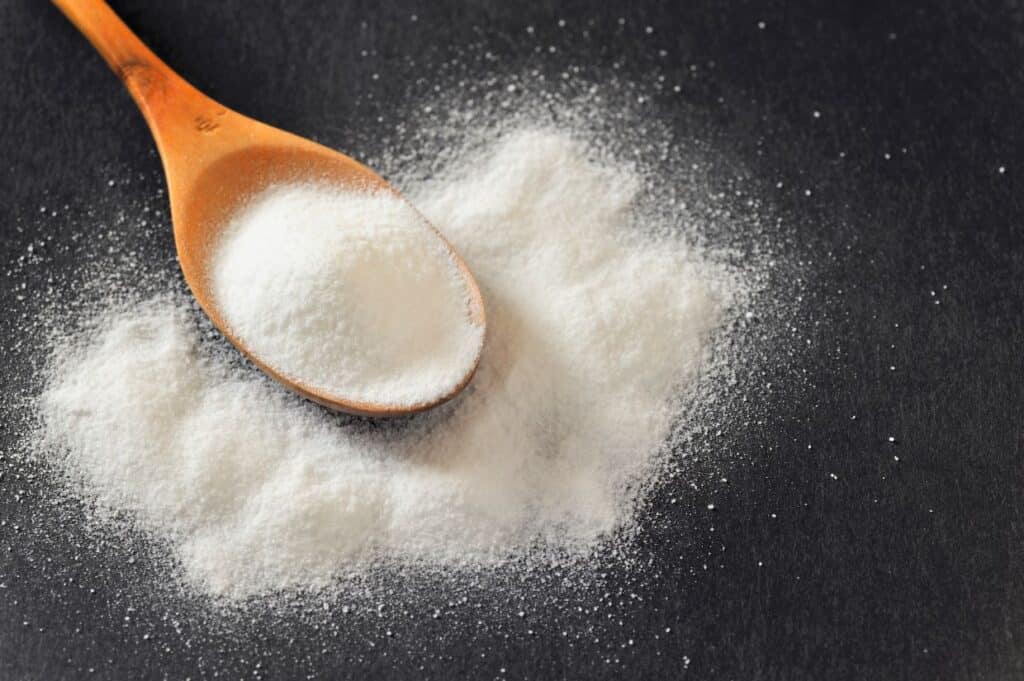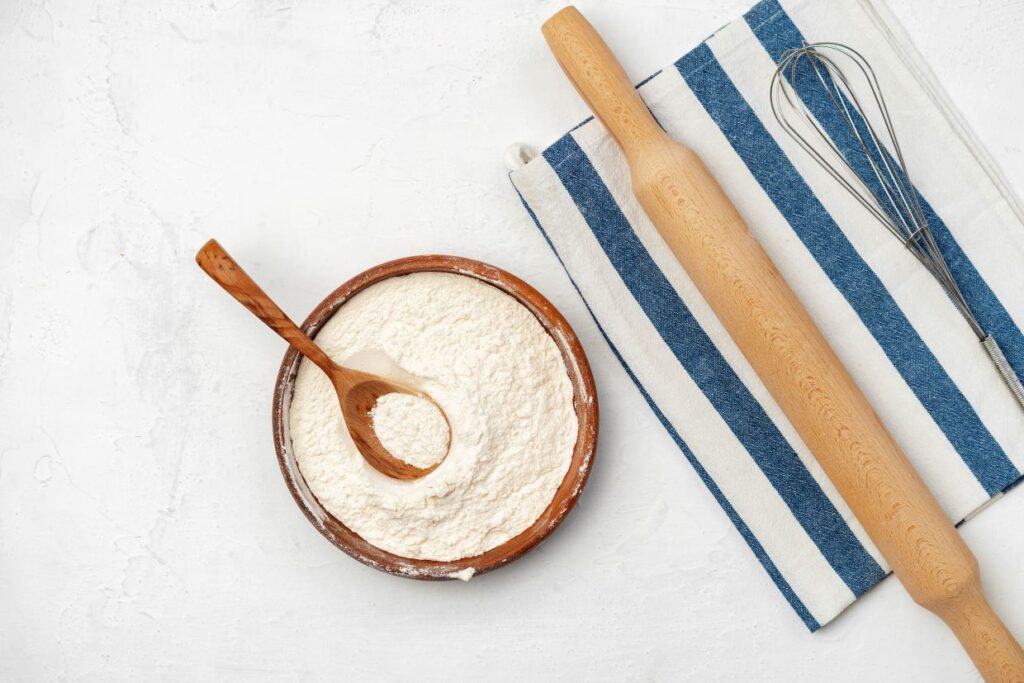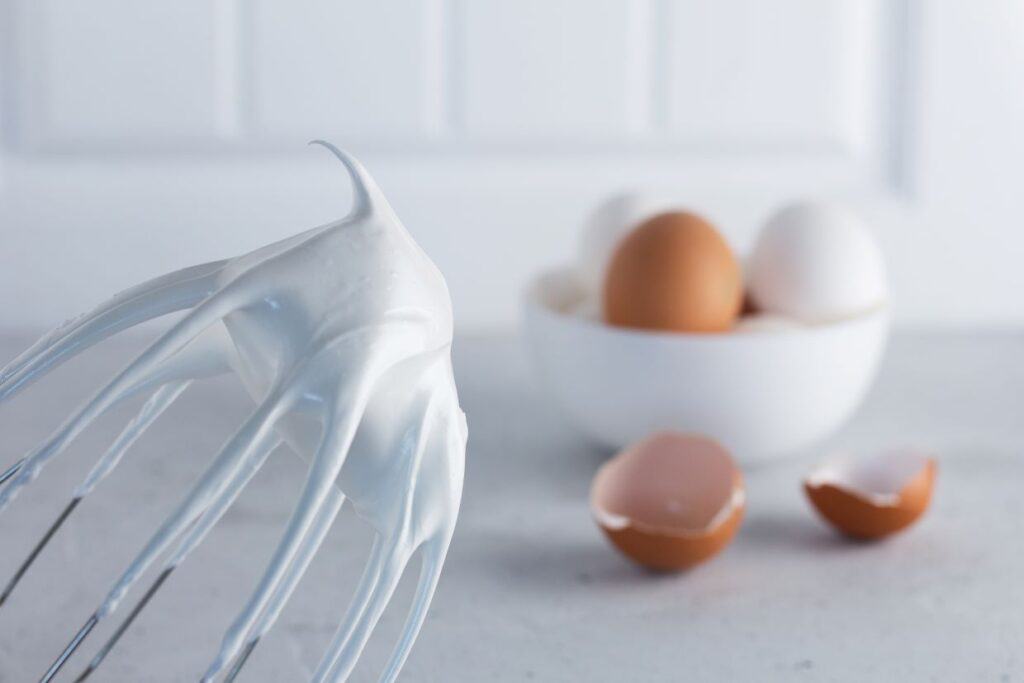Whether you’re a seasoned pro or a beginning baker, you may run out of baking soda or find yourself with an expired box. What do you do if you don’t have baking soda in your pantry when you need it? Use the next best thing — a substitution.

From baking powder to club soda, this article will walk you through the best baking soda substitutes so you can get back to baking quickly.
Why baking soda — and baking soda substitutes — are necessary
Here are a few reasons why you need it:
- It is a leavening agent — it helps baked goods rise.
- Baking soda also helps give baked goods their fluffy texture.
- It helps with browning and caramelization as well.
Common baking soda substitutes
When using baking soda substitutes, keep in mind that it may change the texture or rise of the baked good. Having baking soda is ideal, but when you run out, these substitutions are a great alternative.
Baking powder
Baking powder works best in recipes that only call for baking soda. Too much baking powder can leave a recipe tasting salty, so leave out any additional salt the recipe calls for. Baking powder is a leavening agent like baking soda, but it also makes baked goods fluffier, so cookies might turn out cakier.
To substitute baking powder for baking soda, use three times as much baking powder as you would baking soda. For example, if the recipe calls for 1 teaspoon of baking soda, use 3 teaspoons of baking powder. If the recipe calls for both baking powder and baking soda. Add the original amount of baking powder the recipe called for, plus the amount you are substituting for the baking soda.
“As much as I think I plan ahead, sometimes I find myself without baking soda, so I add 3 teaspoons of baking powder for every teaspoon of baking soda that my recipe calls for. It’s never let me down yet.”
— Mandy Applegate, Splash of Taste
FDL’S 75 Best Bites

Our cookbook with 75 tasty recipes will be your go-to kitchen companion for easy dinners with ad-free recipes right at your fingertips. Crafted by experienced chefs and recipe developers, this collection offers a treasure trove of tried-and-true dishes that make mealtime a breeze.
Get the Recipe: FDL’S 75 Best Bites
Self-rising flour

Self-rising flour only works as a substitute for baking soda in recipes that already call for flour. Adding flour to a recipe that does not call for flour will ruin the consistency of the batter. It is a great option for cookies, cakes and quick bread.
Self-rising flour is different from all-purpose flour because it has 1 ½ teaspoons of baking powder and ¼ teaspoon of salt mixed into every cup of flour, so it already has a leavening agent. You will have to do some math for this substitute.
First, substitute the all-purpose flour in your recipe for self-rising flour. Then, figure out how much baking powder you have already added —- 1 ½ teaspoons per cup. Next, check your recipe to see how much baking soda it calls for. Double-check that you have used three times the amount of baking powder than the original amount of baking soda called for. For example, if your recipe calls for 2 cups of flour and 1 teaspoon of baking soda, if you have added 2 cups of self-rising flour, you have added 3 teaspoons of baking powder, so you have the correct amount.
Whipped egg whites

Whipped egg whites work best in simple cakes, cookies and muffins. They work as a leavening agent, just like baking soda.
Two whipped egg whites replace one teaspoon of baking soda. However, you don’t want to add extra liquid to a recipe, so you must measure the egg whites. For example, if you add 2 tablespoons of egg whites, remove 2 tablespoons of milk or water from your recipe. Once measured, whip the egg whites into stiff peaks and fold them into the batter at the end of the mixing steps so it is less likely they will deflate.
In recipes that don’t call for an additional liquid, but call for eggs, mix the whites and the yolks in separately. Add the yolks when the eggs are called for in the recipe and whip the egg whites until stiff peaks form. Then, fold them into the batter.
Club soda
Club soda works as a baking soda substitute when your recipe calls for at least ½ cup of liquid. The carbon dioxide in club soda will give baked goods a lift and help them expand, just like baking soda.
To use club soda as a substitute for baking soda, replace ¼ cup of the liquid called for in the recipe with ¼ cup of club soda. When using this method, it is best to add the club soda as the last ingredient. The bubbles will start popping immediately, so the faster you get your baked goods in the oven, the better. More bubbles mean more lift.
Potassium bicarbonate and salt
Potassium bicarbonate works in any recipe that calls for baking soda, such as cakes, cookies and muffins. It has the same leavening properties as baking soda, except it doesn’t contain salt. Potassium bicarbonate works as a one to one substitution, but you will have to add salt. Add ⅓ of a teaspoon of salt for every teaspoon of potassium bicarbonate.
Baker’s ammonia
Baker’s ammonia, also known as ammonium carbonate, works best in thin and crispy baked goods like thin crispy cookies, crackers and biscotti. It has a strong ammonia smell, but the smell bakes off in low-moisture recipes. In recipes with higher moisture content, like cakes and muffins, the smell does not bake off and may be too strong.
Baker’s ammonia helps baked goods rise and expand when combined with heat and acid to produce carbon dioxide. It works as a one to one substitution for baking soda.
Final thoughts
While having all the ingredients you need is ideal, baking powder substitutes can work well too. Be sure to follow all of the directions for how to use the substitutions above carefully, and remember that the texture or the rise may be slightly different than when using baking soda.
Heidi is a Certified Elementary School Teacher in the Inland Northwest and has been teaching for 17 years. She is also a vintage recipe blogger at Real Life of Lulu, where she focuses on recipes that are at least 50 years old, many from her grandparents’ kitchens. When she isn’t teaching or baking, she loves spending time with her husband and three kids.